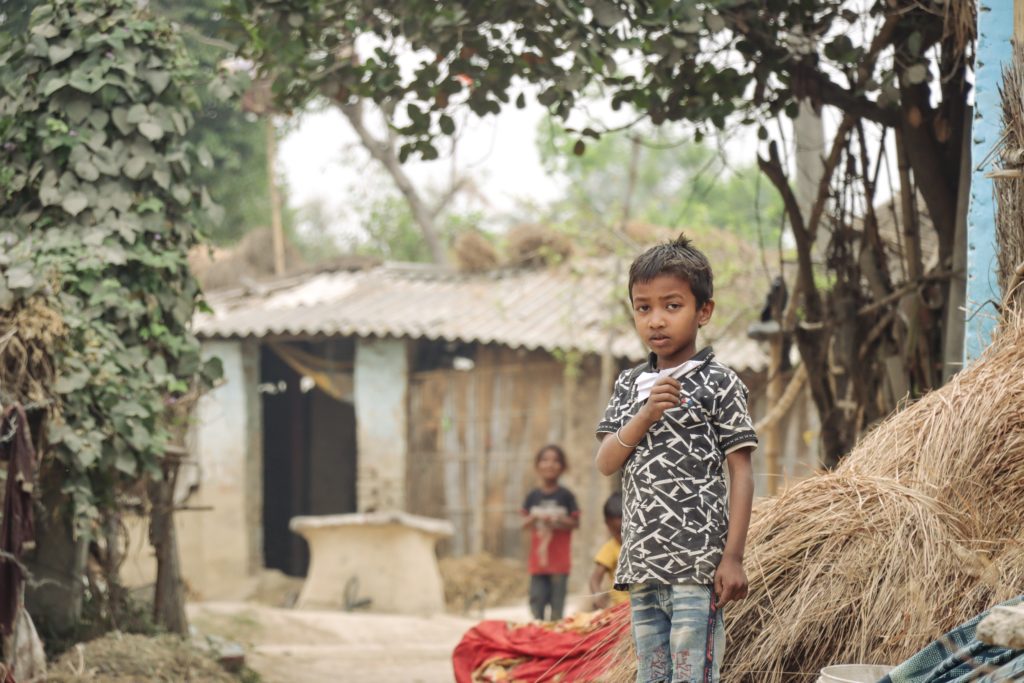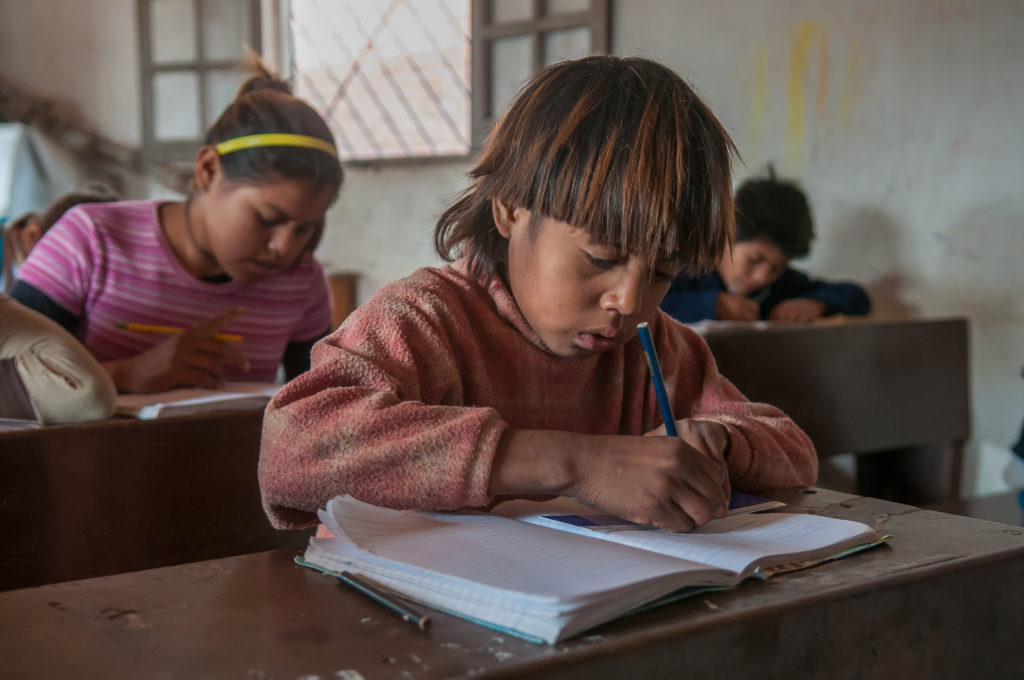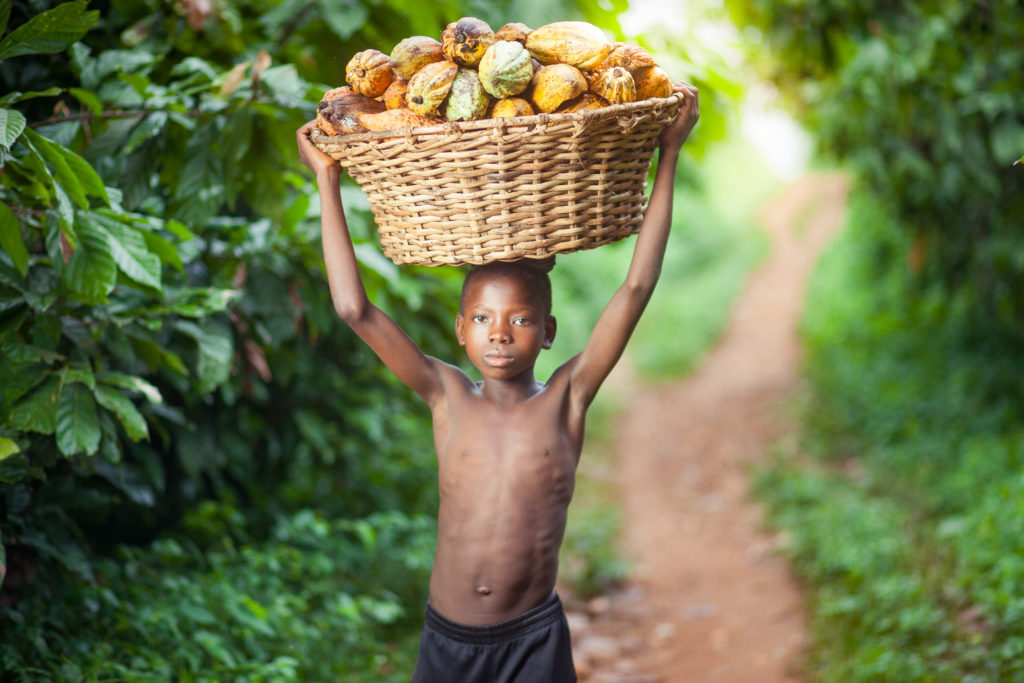Rural areas are defined in opposition to urban, thus comprising the non-urban. Despite the fact that the rural population has increased over time, there are still more people living in urban areas than in rural areas. The challenges faced by children in rural areas are mostly linked to poverty, lack of access to education and transport, and violence. Nevertheless, living in rural communities could also present positive aspects, such as feelings of belonging to a closed community, having a sense of identity and being more in touch with some cultural traditions.

Definition of a rural area
A rural area is an area of land outside the densely populated urban areas in a town or city. Rural areas are traditionally areas that are not included in the urban definition and are usually large, open areas with few houses and few people, as opposed to urban areas which have larger populations (IGI Global, 2023).
Rurality is mostly associated with feelings of belonging to a closed community linked to agricultural activities (FRA, 2002). Nevertheless, the different sociocultural contexts of rural areas make it difficult to speak of rurality, as it is not a standard definition. Rural areas present some features which are common despite the geographical and sociocultural context, and they also present some challenges and threats for children living in those areas.
Rural population in numbers
According to the World Bank data, the rural population has increased over time: in 2010, 3.37 billion people were living in rural areas as defined by national statistical offices, whereas in 2015 rural population was about 3.42 billion people and in 2021 it was about 3.43 billion (World Bank, Rural population, 2023). Despite the fact that the rural population has increased over time, there are still more people living in urban areas than in rural areas.
According to the World Bank, the percentage of rural population over urban population in 2010 was 48 per cent, in 2015 it was 46 per cent and in 2021 it was 44 per cent (World Bank, Rural population percentage, 2023). These figures show how the rural population is increasing but slower than the urban population.
By 2030, the global share of the rural population is projected to drop further to 40 per cent (Glass, 2022). This decrease over time means that rural areas are becoming increasingly smaller, and urban spaces are growing worldwide.
Across the world, the percentage of the rural population is very different. In the European Union (EU), almost 30 per cent of the population (137 million people) live in rural areas which cover over 80 per cent of its territory (49.2 per cent of young people in the EU aged 15-24 were living in a rural area). In Russia, in 2020, 25 per cent of the population lived in rural areas, following a downward trend since 2010.
Similarly, in the same year, 23 per cent of Turkey’s population was rural, and this downward trend has been progressing since the 1960s, with a steep acceleration in the 1980s (Glass, 2022). According to the World Bank data, the percentage of rural population living in Sub-Saharan Africa was about 58 per cent in 2021 (World Bank, Rural population percentage Sub-Saharan Africa, 2023).
Challenges faced by children in rural areas
Rural area is a broad definition which does not take into account the peculiarities of a specific context. This is the reason why some of the following challenges may be present or not depending on the sociocultural and economic conditions of the geographical area considered.
Access to education

The learning performance gap between urban and rural students is a worldwide phenomenon. In most countries, the gap is due to rural students’ under-performance, whereas in some countries where governments or/and international organisations provide educational support specifically designed for rural areas, such as in Latin America, the gap is due to rural students’ out-performance. For example, in Sub-Saharan Africa, rural children perform consistently more poorly than urban children, and compared with the world average, the gap is particularly large (Sugata, Keisuke, 2021).
The main causes related to this aspect are due to the higher per capita costs of education provision in rural areas, the scarcity of infrastructures and professionals to provide training and the lack of public transportation to reach schools (Glass, 2022). Early literacy skills are important determinants of children’s success at school, and poorly educated and poorly qualified youths have been found to be particularly exposed to exclusion and marginalisation in rural areas, with disparities in educational attainment (Glass, 2022).
There are also positive aspects related to the rural context. Rural schools have also been found to have more intergenerational connections than urban schools (for example, parents and teachers who grew up together), as well as community cohesion outside the school that allows teachers and families to interact informally (Glass, 2022).
Poverty
According to UNICEF, children are more than twice as likely as adults to live in extreme poverty. In 2013, 19.5 per cent of children in developing countries were living in households that survived on an average of US$1.90 a day or less per person, compared to just 9.2 per cent of adults.
Globally, almost 593 million children are experiencing multidimensional poverty (World Vision, 2023). Children are disproportionately affected, as they make up around a third of the population studied, but half of the extremely poor. The youngest children are the most at risk – with more than one-fifth of children under the age of five in the developing world living in extremely poor households (UNICEF, 2016).
Sub-Saharan Africa has both the highest rates of children living in extreme poverty at just under 50 per cent, and the largest share of the world’s extremely poor children, at just over 50 per cent. South Asia has the second highest share at nearly 36 per cent—with over 30 per cent of extremely poor children living in India alone. More than four out of five children in extreme poverty live in rural areas (UNICEF, 2016).
Child labour

Child labour is much more common in rural areas. There are 122.7 million rural children in child labour compared to 37.3 million urban children. The prevalence of child labour in rural areas (76.7 per cent) is close to three times higher than in urban areas (23.3 per cent). The main regions affected by this issue are Sub-Saharan Africa (82.1 per cent of rural children are involved in child labour vs 17.9 per cent of urban children), Central and Southern Asia (75.2 per cent vs 24.8 per cent) and Eastern and South-Eastern Asia (75.2 per cent vs 24.8 per cent) (ILO, 2022).
The phenomenon of child labour in rural areas affects boys (16.1 per cent) more than girls (11.6 per cent). Moreover, child labour is intertwined with school dropouts: 34.7 per cent of children in rural areas are not attending school (vs 35.5 per cent of urban children), which confirms the global trend (35.0 per cent). When it comes to children engaged in hazardous work, the percentage of school dropouts is even higher: 43.6 per cent of children do not attend school, even if there is no sensible difference between rural and urban areas.
Child labour occurs most often in agriculture. Statistics show that this trend amounts to 70 per cent of the total worldwide and up to 82 per cent in Sub-Saharan Africa. It is especially common among younger children, for whom the physical demands and hazards of farm work can be particularly damaging. COVID-19 has increased child labour in agriculture, as families who have lost jobs elsewhere have returned to subsistence farming to survive.
Violence against children
Poverty, lack of transport, physical isolation and the “stigma” associated with domestic problems are all drivers for violence against children. In rural areas, these problems are compounded by the difficulties many of those in need have in gaining access to help, information and support (Save the Children 2003). Tackling the issue of violence against children in rural areas implies tackling all the other challenges mentioned above, in order to minimize the elements which could have an impact on children.
Data shows child maltreatment reports are higher in rural than urban areas (ABA, 2015). In the United States (US), statistics show that rural children had twice the rate of overall maltreatment as the general population. The incidence of overall harm in rural counties was 1.7 times the rate in major urban counties— 10.8 versus 6.4 children per 1,000, as well as the rate of sexual abuse in rural counties (2.8 per 1,000 children), was twice the rate in major urban counties (1.4 children per 1,000).
Emotional abuse rates, as well as emotional neglect, are higher among children living in rural areas than in urban counties. As regards emotional abuse rates, rural children are affected by it 2.6 times more than urban counties (3.4 versus 1.3 children per 1,000), whereas emotional neglect among children living in rural counties (4.7 children per 1,000) is higher than for children living in major urban counties (1.8 children per 1,000) (ABA, 2015).
A different study conducted in Poland shows how the incidence of individual forms of domestic violence in rural areas varied depending on the type of violence considered. For instance, psychological violence is more related to urban areas (60.5 percent) rather than rural areas (42.4 percent). Nevertheless, if we consider sexual violence, the percentage related to the kind of abuse against children, research shows how it affects a smaller number of children (8.1 percent in rural areas vs 3.2 percent in urban areas) (Terelak, Kołodziejczak, Bulsa, 2019).
Child mortality
The rural-urban gap in under-five mortality has reduced from 44 per thousand between 1992 and 1993 to 30 per thousand between 2004 and 2005 which further decreased to 14 per thousand between 2019 and 2021. Despite the more rapid reduction of rural under-five deaths, it is still higher than the mortality in urban areas (Kumar, Piyasa & Saikia, 2022).
Moreover, the centralisation of emergency healthcare services has led to an increase in travelling time for patients and to an increase in related costs. These aspects have an impact on the quality and access to health care, both for children and for mothers, in terms of treatment and prevention.
Malnutrition
In regard to malnutrition, urban children generally have a better nutritional status than their rural counterparts, even if recent research suggests that urban malnutrition is on the rise. The better nutritional status of urban children is probably due to the cumulative effect of a series of more favourable socioeconomic conditions, which, in turn, seems to lead to better caring practices for children and their mothers (Smith, Ruel, Ndiaye, 2004).
Access to transport
Access to transport is a key concern for rural youths. Substandard and expensive public and private transport infrastructure has been widely recognised as a key factor that can lead to the exclusion of rural youths from the education system and/or labour market. The cost of transport can also impact the social participation of youths, who cannot afford to attend activities/cultural events in places far from their home (Glass, 2022).
The lack of transport is challenging not only in having access to education and the labour market, but it is also a cause for social isolation and marginalization of rural children and youths. This negatively affects children’s participation as well as their physical, mental, and emotional development and well-being.
Written by Arianna Braga
Internally proofread by Aditi Partha
Last updated on 12 March 2023
References:
ABA (2015). Meeting the Challenge of Child Maltreatment in Rural Areas. Retrieved from the American Bar Association at https://www.americanbar.org/groups/public_interest/child_law/resources/child_law_practiceonline/child_law_practice/vol-34/march-2015/meeting-the-challenge-of-child-maltreatment-in-rural-areas/, accessed on 14 April 2023.
FRA, 2002. Racism in rural areas. Retrieved from FRA at http://fra.europa.eu/en/publication/2005/racism-rural-areas, accessed on 11 March 2023.
Glass, J. (2022). The future of youth in rural areas: responsibilities of local and regional authorities: Expert report to the Council of Europe Congress of Regional and Local Authorities Current Affairs Committee. Retrieved from the Council of Europe at https://pure.sruc.ac.uk/en/publications/the-future-of-youth-in-rural-areas-responsibilities-of-local-and-, accessed on 11 March 2023.
IGI Global (2023). What is Rural Areas. Retrieved from IGI Global at https://www.igi-global.com/dictionary/importance-of-plant-production-in-development-of-rural-areas/64889, accessed on 11 March 2023.
ILO, 2020. Child Labour: Global estimates 2020, trends and the road forward. Retrieved from ILO at https://www.ilo.org/ipec/Informationresources/WCMS_797515/lang–en/index.htm, accessed on 11 March 2023.
Kumar, C., Piyasa & Saikia, N. An update on explaining the rural-urban gap in under-five mortality in India, in BMC Public Health 22, 2093 (2022). Retrieved from BMC Public Health at https://doi.org/10.1186/s12889-022-14436-7, accessed on 12 March 2023.
Save the Children (2003). Children and Domestic Violence in Rural Areas: A child-focused assessment of service provision. Retrieved from Save the Children at https://resourcecentre.savethechildren.net/pdf/children_and_domestic_violence_in_rural_areas.pdf/, accessed on 12 March 2023.
Smith, L. C., Ruel, M. T., Ndiaye, A. (2004). Why is child malnutrition lower in urban than rural areas?. Retrieved from IFPRI at https://ebrary.ifpri.org/utils/getfile/collection/p15738coll2/id/63532/filename/63533.pdf, accessed on 12 March 2023.
Sugata S., Keisuke K. (2021). An analysis of the learning performance gap between urban and rural areas in Sub-Saharan Africa, in South African Journal of Education, Volume 41, Number 2, May 2021 1, Art. #1779, 17 pages. Retrieved from the South African Journal of Education at https://doi.org/10.15700/saje.v41n2a1779, accessed on 12 March 2023.
Terelak, A., Kołodziejczak, S., Bulsa, M. (2019). Scale and forms of domestic violence against schoolchildren in rural, rural-urban and urban areas. Ann Agric Environ Med., 26(4), 572-578. Retrieved from Annals of Agricultural and Environmental Medicine (AAEM) at https://doi.org/10.26444/aaem/103871, accessed on 14 April 2023.
UNICEF (2016). Ending Extreme Poverty: A Focus on Children. Retrieved from UNICEF at https://www.unicef.org/reports/ending-extreme-poverty-focus-children, accessed on 12 March 2023.
Weeks, John (2010). Defining Urban Areas, in Remote Sensing of Urban and Suburban Areas (pp. 33-45), DOI:10.1007/978-1-4020-4385-7_3. Retrieved from ResearchGate at https://www.researchgate.net/publication/226018640_Defining_Urban_Areas, accessed on 11 March 2023.
World Bank, Rural population (2023). Rural population. Retrieved form World Bank at https://data.worldbank.org/indicator/SP.RUR.TOTL, accessed on 12 March 2023.
World Bank, Rural population percentage (2023). Rural population (per cent of total population). Retrieved form World Bank at https://data.worldbank.org/indicator/SP.RUR.TOTL.ZS, accessed on 12 March 2023.
World Bank, Rural population percentage Sub-Saharan Africa (2023). Rural population (per cent of total population) – Sub-Saharan Africa. Retrieved from World Bank at https://data.worldbank.org/indicator/SP.RUR.TOTL.ZS?locations=ZG, accessed on 12 March 2023.
World Vision (2023). Global poverty: Facts, FAQs, and how to help. Retrieved from World Vision at https://www.worldvision.org/sponsorship-news-stories/global-poverty-facts#:~:text=593%20million%20children%20are%20experiencing,for%2011.1%20million%20of%20those, accessed on 14 April 2023.

